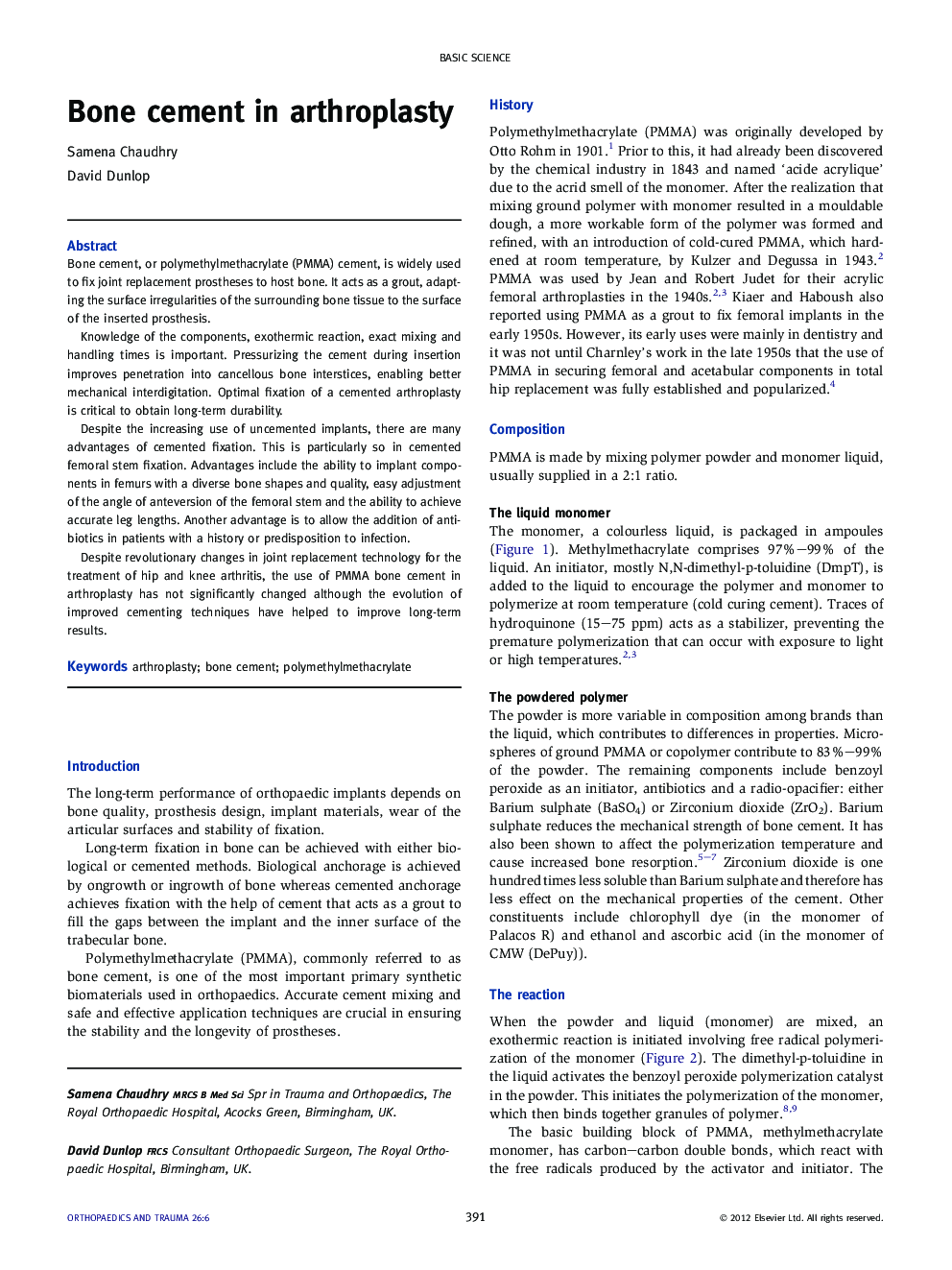| کد مقاله | کد نشریه | سال انتشار | مقاله انگلیسی | نسخه تمام متن |
|---|---|---|---|---|
| 4080477 | 1267550 | 2012 | 6 صفحه PDF | دانلود رایگان |

Bone cement, or polymethylmethacrylate (PMMA) cement, is widely used to fix joint replacement prostheses to host bone. It acts as a grout, adapting the surface irregularities of the surrounding bone tissue to the surface of the inserted prosthesis.Knowledge of the components, exothermic reaction, exact mixing and handling times is important. Pressurizing the cement during insertion improves penetration into cancellous bone interstices, enabling better mechanical interdigitation. Optimal fixation of a cemented arthroplasty is critical to obtain long-term durability.Despite the increasing use of uncemented implants, there are many advantages of cemented fixation. This is particularly so in cemented femoral stem fixation. Advantages include the ability to implant components in femurs with a diverse bone shapes and quality, easy adjustment of the angle of anteversion of the femoral stem and the ability to achieve accurate leg lengths. Another advantage is to allow the addition of antibiotics in patients with a history or predisposition to infection.Despite revolutionary changes in joint replacement technology for the treatment of hip and knee arthritis, the use of PMMA bone cement in arthroplasty has not significantly changed although the evolution of improved cementing techniques have helped to improve long-term results.
Journal: Orthopaedics and Trauma - Volume 26, Issue 6, December 2012, Pages 391–396